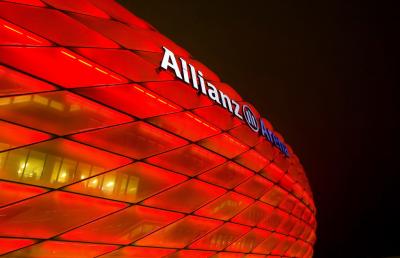May 7 2012
By Joel Scanlon
A team of researchers from Polytechnic University of Valencia (UPV, Spain) has established that the usage of colours has become more versatile in today’s contemporary architecture.
 The Allianz Arena stadium in Munich can be illuminated with various colors. Red is usually chosen when Bayern is playing. Credit: André Zehetbauer
The Allianz Arena stadium in Munich can be illuminated with various colors. Red is usually chosen when Bayern is playing. Credit: André Zehetbauer
According to Juan Serra who is a lecturer at the Institute for Heritage Restoration at UPV the usage of more colours in recent times represents the ability of the building to adapt to change and establishes versatility. Serra and her team have conducted researches on the work of architects from the 20th and 21st centuries.
They have been able to identify four qualities consistently which are transformation, movement, innovation and fragmentation. These four qualities form the basis of how the colours are decided and manufactured. Changing the colour of the building alter the appearance, the intensity of light falling on the building and the angle to a substantial extent. Some examples of such buildings are Agbar Tower from Nouvel in Barcelona where glass slats and aluminium plates have been used. However during night time LED lights provide light images over the building through an advanced hardware and software system. Serra also adds that colour can also help the observer differentiate between the constructive systems used in each area of the building.
Buildings that involve movement are urban places where colours travel at high speeds. Some examples are the Times Square located in New York and Piccadilly Circus in London where the places involved are used for providing information and advertising. The last feature, innovation is introduced by various IT companies through the usage of CAD programs and other sophisticated hardware and software.
Source: http://www.fecyt.es